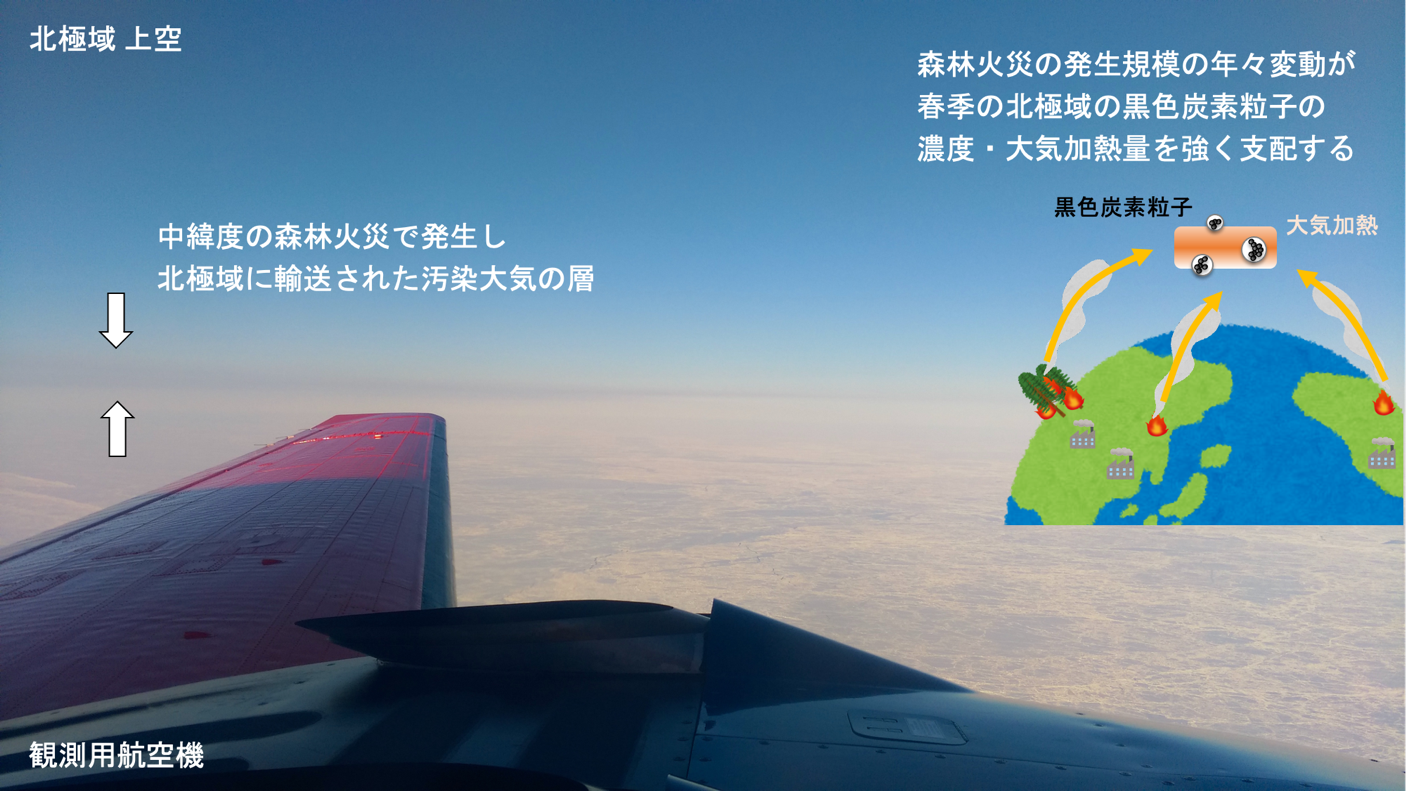DATE2021.11.05 #Press Releases
Demonstrates that forest fires are an important source of black carbon particles that heat the Arctic atmosphere
Disclaimer: machine translated by DeepL which may contain errors.
〜Contribution to the future prediction of Arctic warming
Institute for Space and Earth Environment Studies, Nagoya University
Graduate School of Science, The University of Tokyo
National Institute of Polar Research
Summary
A research group led by Assistant Professor Sho Ohata of the Institute for Space and Earth Environment, Nagoya University, National University Corporation, Associate Professor Makoto Koike of the Graduate School of Science, The University of Tokyo, and Dr. Andreas Haber of the Alfred Wegener Institute for Polar and Marine Research (Germany), in collaboration with the Meteorological Research Institute of the Japan Meteorological Agency and the National Institute of Polar Research, has found that the spring They found that interannual variations in black carbon aerosol (BC) concentrations in the Arctic atmosphere are strongly controlled by interannual variations in the magnitude of mid-latitude forest fires.
BCs emitted into the atmosphere by fossil fuel combustion and forest fires absorb solar radiation and have the effect of heating the atmosphere. Most of the BCs in the Arctic region are transported from outside the Arctic Circle and are thought to contribute to the warming of the Arctic region and accelerated melting of snow and ice, but observations are limited and there remains a large uncertainty in estimating the contribution of various sources and their climatic effects.
In this study, through joint international observations using aircraft, we found that the interannual variability of vertical summation of spring BC in the Arctic region roughly corresponds to the variability in the number of forest fires in the mid-latitudes. Comparison of numerical model simulations with observations indicates that the previously assumed BC emissions from forest fires may have been greatly underestimated. The observations obtained in this study will be used to validate and improve various numerical models for assessing the climate impacts of BC, and are expected to lead to more accurate estimates of climate impacts.

Figure: photo taken from inside the aircraft during the 2018 aircraft observations (PAMARCMiP). Layers of polluted air were visible. The schematic represents BC transported from the mid-latitudes to the Arctic region.
The results of this research have been published in the international journal Atmospheric Chemistry and Physics.
This research was supported by the "Elucidation of the Dynamics of Arctic Aerosols Related to Global Warming and Evaluation of Radiation Effects" funded by the Institute of Engineering Innovation of the Environmental Restoration and Conservation Agency, Japan, and the "Arctic Region Research Acceleration Project (ArCS II)" of the Ministry of Education, Culture, Sports, Science and Technology of Japan.
For more details, please visit the Nagoya University website.


